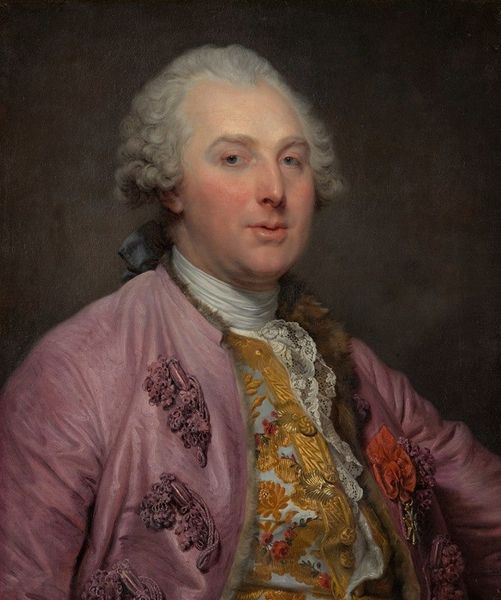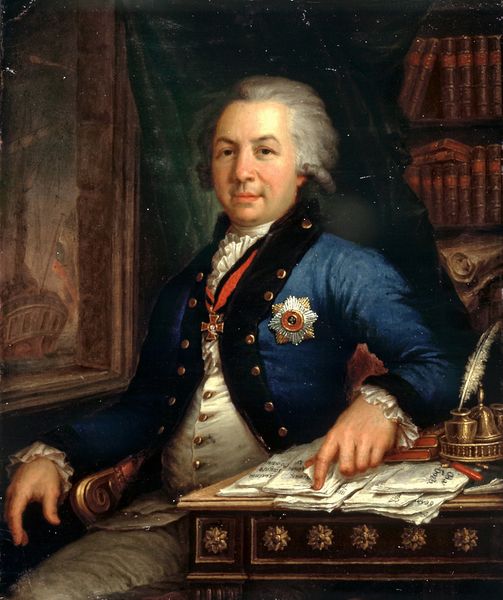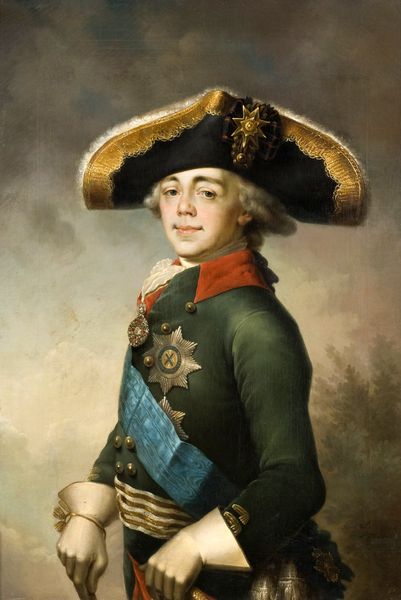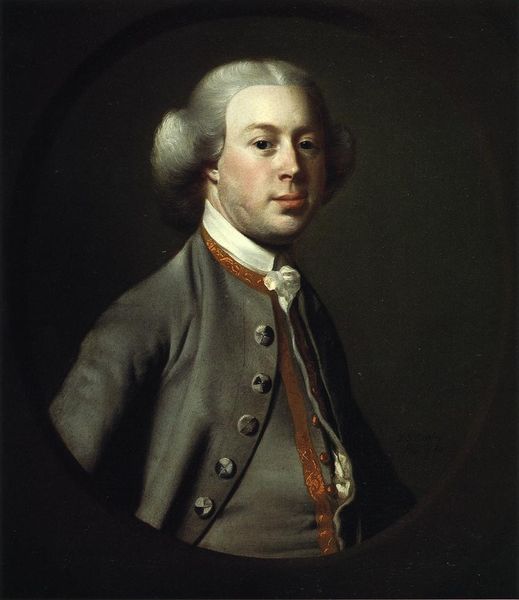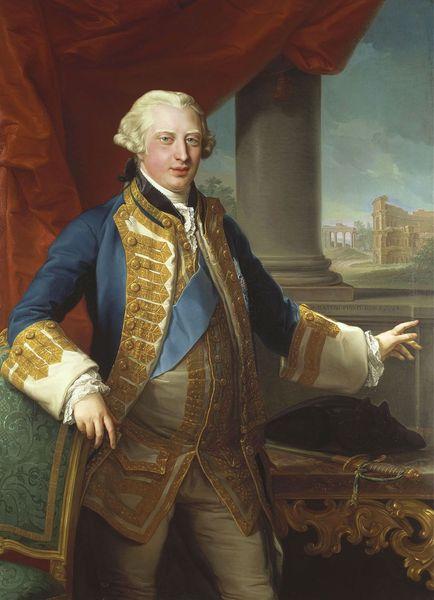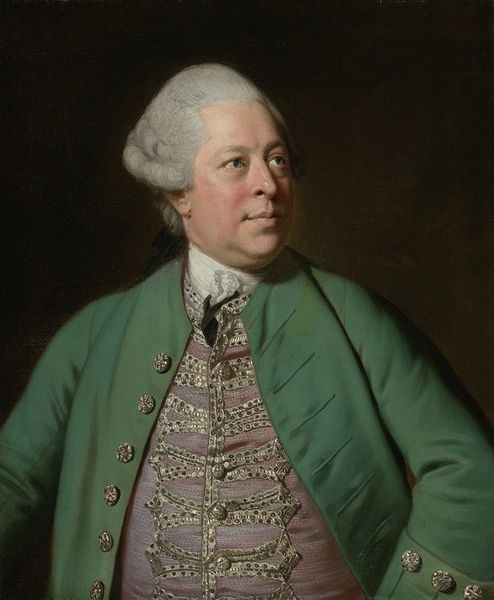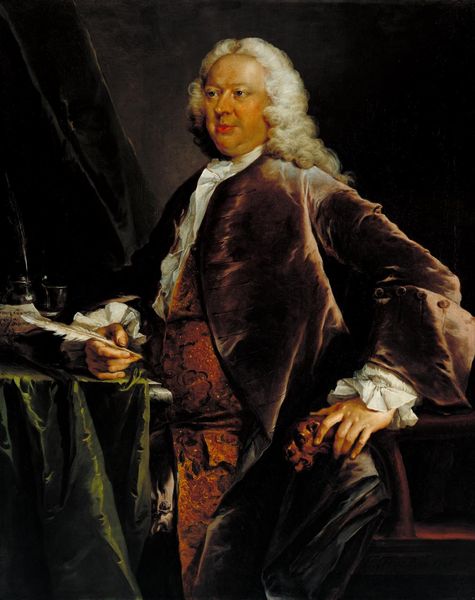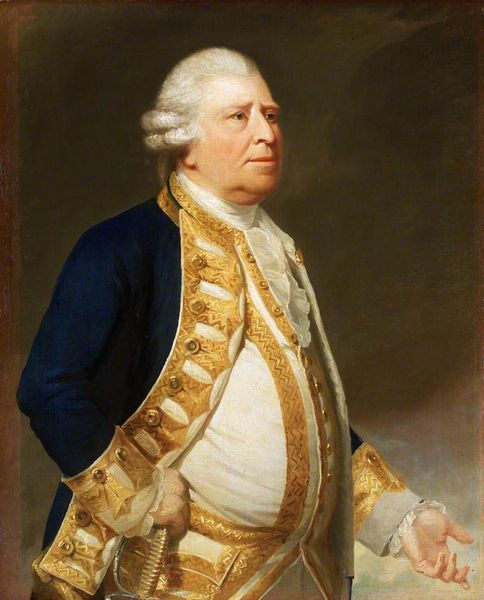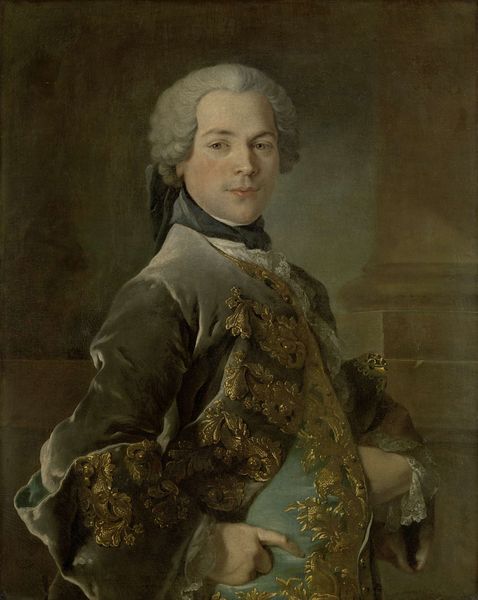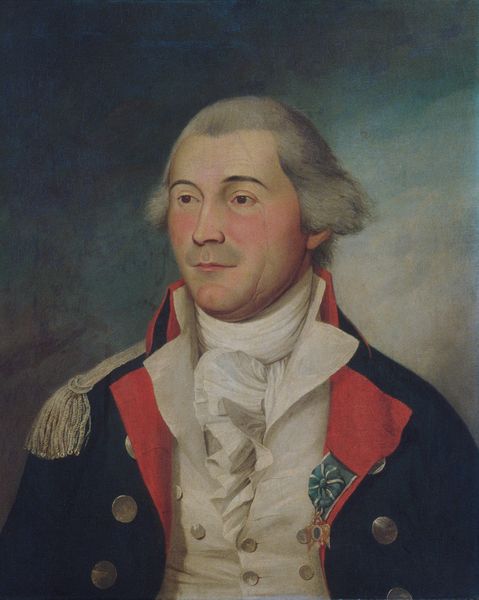
Dimensions: 67 x 56.5 cm
Copyright: Public domain
Editor: This is Joseph Ducreux's "Portrait of An Aristocrat in Uniform," painted around 1790. The man’s expression strikes me. It’s not the stern, detached gaze you often see in portraits of that era. What do you read in his face, and more broadly, in this image? Curator: It's precisely that seemingly unbuttoned affect that intrigues, isn’t it? Forget the formal pose and status symbols momentarily, and focus on how Ducreux teases out this figure's *psychological* interiority through these symbolic choices. Observe his relaxed demeanor, almost a smirk – radically different from, say, a stoic Roman bust or a formally posed Renaissance nobleman. This disruption invites us to ask what symbols have been dismantled, and what this signifies. What does it tell us about shifting notions of power, authority, even selfhood at the close of the 18th century? Editor: So, you’re saying it's more than just a guy in a fancy uniform? It's a visual disruption of societal norms? Curator: Absolutely. His gaze isn't defiant, but subtly challenging. The uniform signifies position, history, perhaps obligation. Yet his affect undercuts that expected weight. The relaxed mouth and quizzical eyebrow… is it detachment, world-weariness, ironic amusement, the dawn of the modern individual perhaps? What past does his expression remember? What does he dream of for the future? This all *signifies.* Ducreux challenges you, as the viewer, to become active, constructing narratives around him, projecting our own symbols onto his blank face. Editor: That’s fascinating. I hadn't considered the subversion of those power dynamics so directly in the portrait. It really changes how I see the painting, considering the era it was created in. Curator: Indeed. Portraits from this time period invite us to contemplate shifting cultural memory and how visual cues were both upheld and undermined. It all circles back to the stories we tell ourselves and each other using these constructed images.
Comments
No comments
Be the first to comment and join the conversation on the ultimate creative platform.
